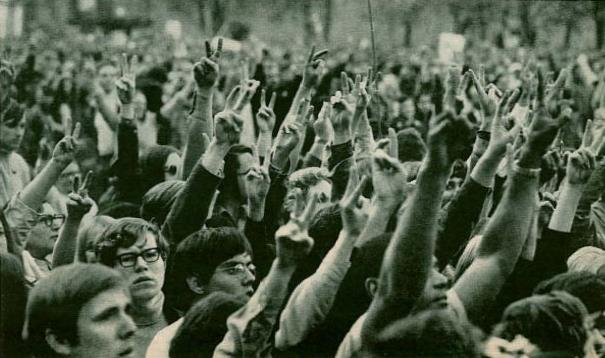

Country Joe and the Fish was a rock band most widely known for musical protests against the Vietnam War, from 1966 to 1971.
The group's name is derived from leftist politics; "Country Joe" was a popular name for Joseph Stalin in the 1940s, while "the fish" refers to Mao Tse-Tung's statement that the true revolutionary "moves through the peasantry as the fish does through water."
The group began with the nucleus of "Country Joe" McDonald (lead vocals) and Barry "The Fish" Melton (lead guitar), recording and performing for the "Teach-In" protests against the Vietnam War in 1965. Co-founders McDonald and Melton added musicians as needed over the life of the band. By 1967, the group included Gary "Chicken" Hirsh (drums) (born Mar 9, 1940, in Chicago, Illinois); David Cohen (keyboards) (born 8 April 1942, in Brooklyn, New York) and Bruce Barthol (bass) (born 11 November 1947 in Berkeley, California). The 1967 lineup lasted only two years, and by the 1969 music festival Woodstock, the lineup included Greg 'Duke' Dewey (drums), Mark Kapner (keyboards) and Doug Metzler (bass).
































